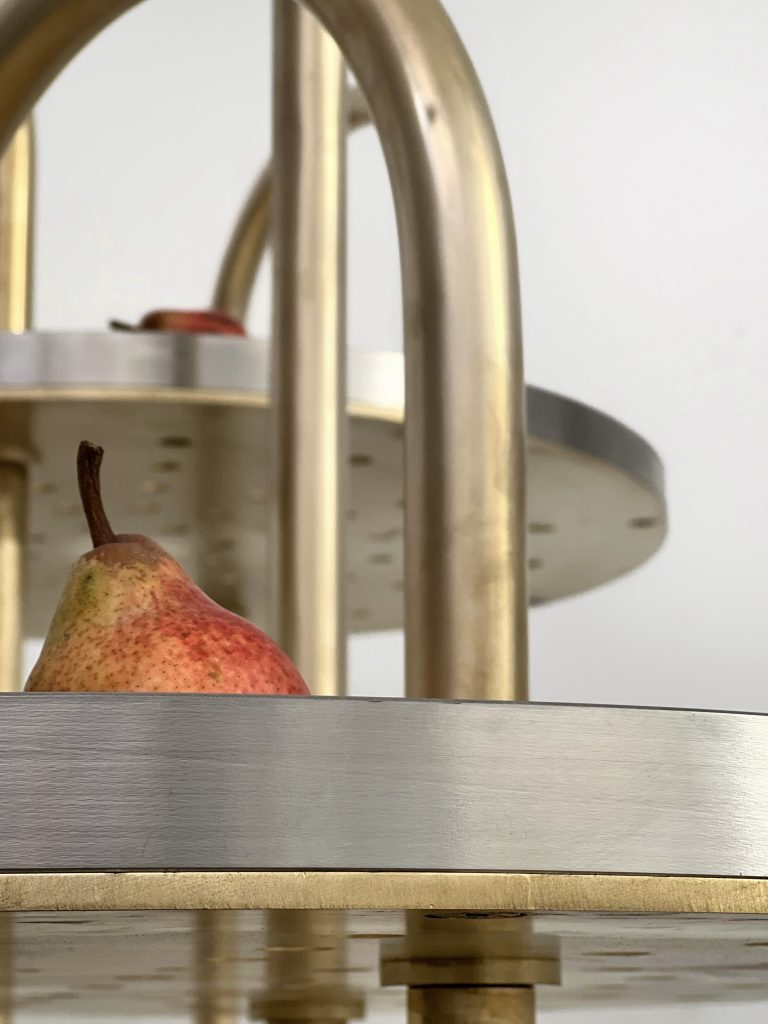Strasbourg, tramway station Jardinier
Strasbourg, Apollonia’s garden
Within the framework of VITAL, European cooperation project

Fruit tree, well, hand pump, ensemble of sculptures.
Since November 15, 2023, the work of the artists Thibault Honoré and Justine Maljak, PANDO, can be seen in the garden near the tram stop “Jardinier” on line E; the entire set of sculptures is displayed there. Additionally, a twin pump has been installed in the Apollonia Garden, allowing the volunteer gardener to directly draw water from the groundwater.
The term “pando,” whose Latin etymology means “I spread,” is the name given to a forest of forty thousand quaking aspen trees in the heart of the Bryce Canyon National Park (United States). These thousands of trees are all identical and form a clonal colony. Each aspen is connected to its neighbor through a single millennia-old root that extends over several hectares.

Inspired by this biological model, the work PANDO is based on the development of a project for plant utopia in the Robertsau neighborhood. This sustainable cooperation between nature, citizens, and artistic creation is part of the ongoing participatory gardening program initiated by the Apollonia art space. The goal : to contribute, through the installation of on-site works, to the development of vegetation in the city.
Every square meter of garden and every planted tree requires several liters of water per week to grow. The development of underground drilling and pumping devices provides the necessary water resources for the preservation of these plant species by drawing reasonably from one of Europe’s most significant water resources, the Rhine aquifer.


Planting, maintaining, watering, and harvesting are seasonal actions for the gardeners who are the foundation of this creative endeavor. PANDO highlights the theme of harvesting from an aesthetic perspective that considers picking as an artistic gesture. These works were conceived as containers resembling baskets. Symbolically awaiting the ripening of fruits and the development of crops, they will be activated during harvests to store the fruits of the picks.
